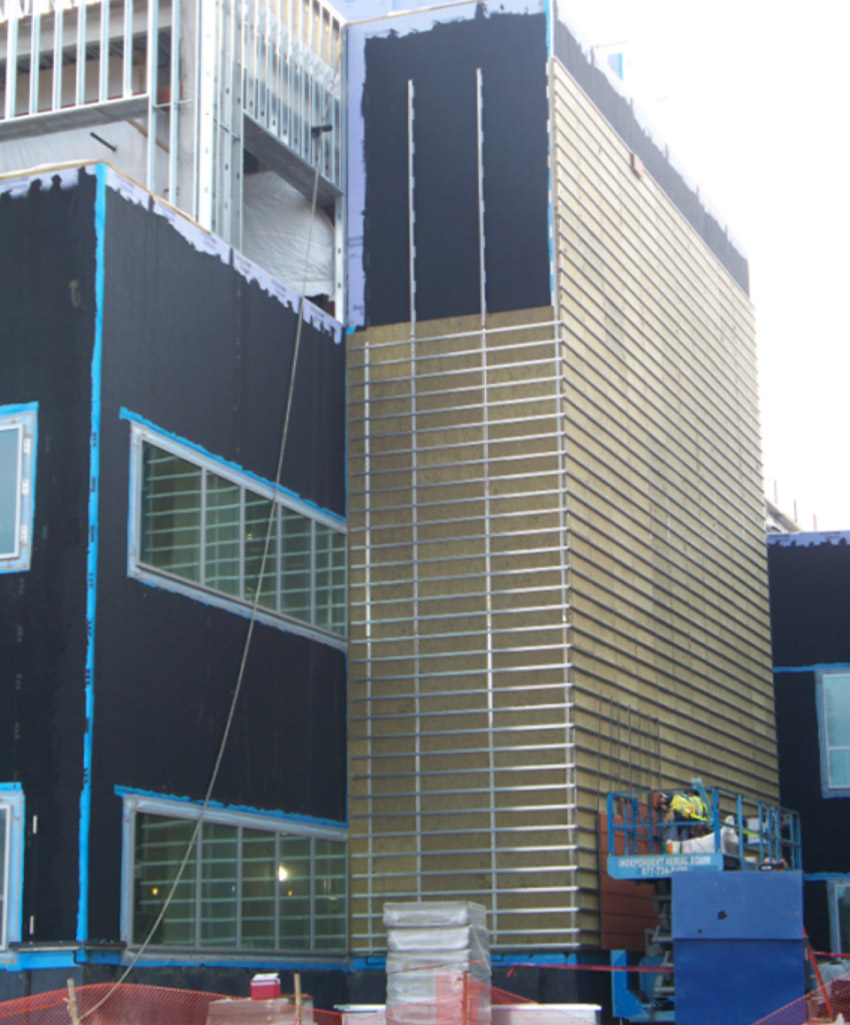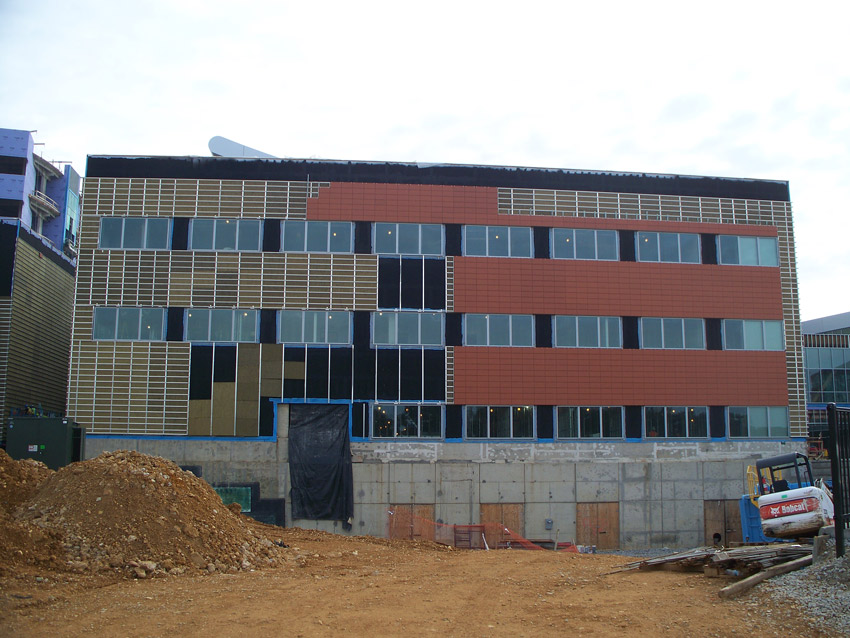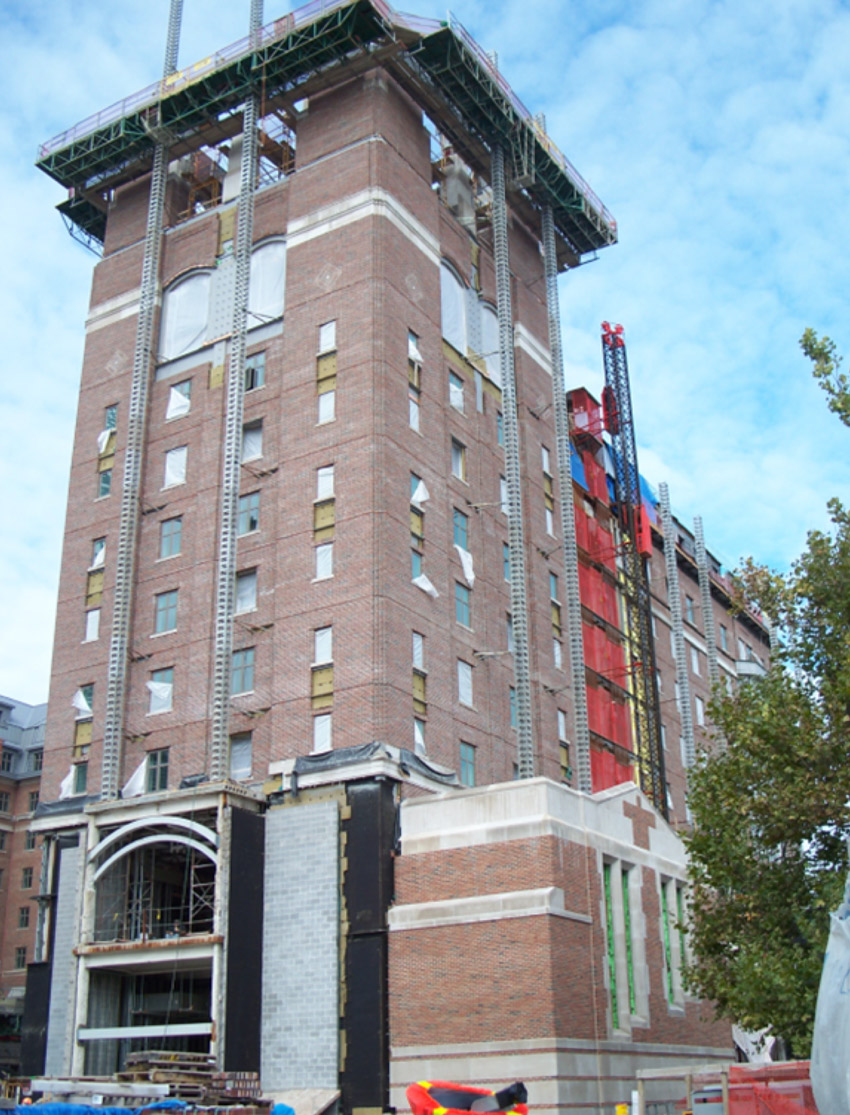Mineral Wool as a Continuous Insulation Solution
Installation
Rainscreen and cavity wall systems vary greatly from types of hangers to how they are installed. As a semi-rigid product, mineral wool is easy to cut and install, and its flexibility allows it to conform to building shapes and construction irregularities. It comes in standard-sized sheets and is easily cut with a serrated knife.
Generally, mineral wool insulation is installed with abutted joints and mechanically secured and attached to the building substrate. Note that the joints do not need to be taped; mineral wool leaves a clean, straight edge when cut. A 1-inch air gap is required between the insulation and the brick veneer for a masonry exterior wall application regardless of the type of insulation installed within the wall cavity.
Tradeoffs exist when selecting continuous insulation for a particular assembly. For example, unlike rigid foam, mineral wool flexes for a better fit on curved walls and other surfaces.

Shown here on the Fort Belvoir Community Hospital in Fort Belvoir, Virginia, mineral wool is being installed in a steel stud and gypsum board exterior construction. The material is being installed behind the grid structure that will hold the terra cotta facade panels.

This is the same Fort Belvoir Community Hospital project where the workers are installing the terra cotta facade panels over the mineral wool insulation.
Insulation is friction-fitted between the wall ties in masonry applications, as shown in the top image. After installing the insulation, the installer would secure with a clip, utilizing the center notches to secure directly on the tie as shown. If using a flange or flat-style hanger, installation of insulation is friction-fit between ties, forming a seam (a typical size is 16 inches on center).

The North Quad project on the University of Michigan campus in Ann Arbor, Michigan, is a typical masonry cavity wall construction. In this photo, you can see the masons installing the mineral wool insulation in the masonry cavity and securing it with retaining clips that fasten to the masonry wall ties. Note the very tight seams, especially around the brick ties. No taping or extra forming is necessary.

Here, the insulation is fully installed on the North Quad project. It can be seen through the unfinished openings below the windows.









